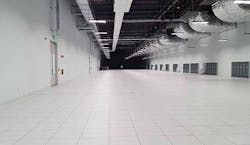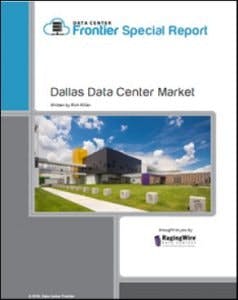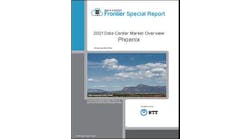We continue our series of stories on the leading geographic markets for data center space. Data Center Frontier is partnering with DatacenterHawk to provide in-depth market reports on each city we profile. This time, we revisit the Dallas data center market, which is experiencing a data center boom. This is part two of a four-part series, and explores trends in Dallas data center demand.
Download the full report.
Trends in Demand
The Dallas data center market experienced about 5 megawatts (MW) of absorption in the first quarter of 2018. We anticipate this number will be larger in 2018 on a quarterly basis, as several transactions are pending that could take some of the existing commissioned power off the market.
From a demand perspective, Dallas averages approximately 20 MW of net new growth per year. The first quarter results have kept pace, positioning the market for growth should these larger deals materialize.
One of the primary factors driving absorption is the healthy economy and the growing list of large businesses, which generates Dallas data center demand. Smaller cloud requirements have also picked Dallas over the past 12 months because of the competitive provider market and favorable economic situation, a key segment of the growing out-of-market demand.
Dallas Data Center Demand Characteristics
The Dallas market is distinctive for its versatility. While many regional clusters are driven by one or two key business verticals, data center demand in Dallas is fed by a broad range of industries, and a blend of global and local customers.
Dallas benefits from its location, which is attractive to companies seeking data center space in the center of the U.S. to maintain good latency to all areas of the country. The state of Texas also has an independent energy grid (ERCOT), which was attractive to companies seeking disaster recovery capabilities, especially in the wake of the 2003 East Coast blackout, which was exacerbated by outages that rippled across interconnected grids in the Northeast.
A significant amount of growth in the region can be directly tied to local business growth. According to statistics from the US Census Bureau, companies operating in DFW’s three largest counties accounted for 21.6% of all employers in Texas.
The area is home to the corporate headquarters of eighteen Fortune 500 companies including Exxon Mobil, JC Penney, AT&T, Texas Instruments, and others. A portion of the data center activity in DFW has come from companies upgrading aged data center infrastructure within an owned facility. Instead of reinvesting in the existing operation, many of those companies have chosen to house their infrastructure with colocation providers, fueling demand. This trend is pervasive across all major markets.
Enterprises that have data centers in primary coastal markets such as Northern California or New York City view Dallas as a logical location in the center of the United States. In addition, the steady colocation supply delivered over the past few years puts DFW in a position to compete for large, national projects. Larger colocation providers completed record transaction sizes in Dallas over the past few years, including deals as large as 10 MW of critical load.
The DFW market has been the beneficiary from the growth of cloud computing as well. Cloud providers like IBM Softlayer, Rackspace, and Verizon Terremark (now Equinix) have placed their infrastructure with larger colocation providers. For instance, at Digital Realty’s 68-acre Richardson campus, more than 20 MW of the delivered 35 MW are apportioned to growing cloud providers. It’s anticipated this trend will continue, as data center users further embrace cloud computing and cloud providers rely on larger colocation providers for infrastructure support.
The arrival of a massive Facebook data center in Fort Worth suggests the region is ripe for larger requirements, as hyperscalers often create clusters of cloud campuses in regions with favorable economics. Several providers have landed 2 MW to 4 MW deals with cloud platforms.
One reason that Dallas has been slow to emerge as a hyperscale market is the early decision by Microsoft to focus its central cloud region in San Antonio, rather than Dallas. Microsoft has deployed a company-built data center in San Antonio, and also reportedly signed several large wholesale deals at CyrusOne facilities in San Antonio.
Over the next few weeks, the Data Center Frontier series on the Dallas Data Center Market will cover the following topics for the region:
- Market Overview & Analysis
- Trends in Supply
- Business Environment
Download the full Data Center Frontier “Dallas Data Center Market” special report, courtesy of RagingWire Data Centers.
And for further coverage, check out Data Center Frontier’s page dedicated to the Dallas Data Center Market, that will provide the latest stats and info on this quickly growing area that is continuing to experience a data center boom.







